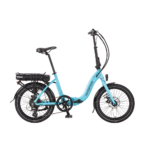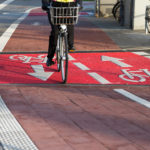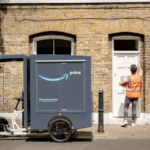Butting in at this point, a difference that affects this trailing edge wear is that the cranks and chainwheel are not mechanically locked together as on a normal bike. The chainwheel freewheel means that when a rider isn't pedalling or keeping pace with the motor output the chainwheel can be towed by the motor. As I remarked earlier, there will be some lag in motor response from torque signals which in turn means a degree of run-on when the chainwheel towing occurs.
Flecc, is there a simple possibility that the freewheel in the Nexus hub is stiff or seized, and that all of the freewheel has been happening at the Panasonic chainwheel ?
Would that be a sufficient pressure on the back of the chainwheel teeth to cause some wear ? Probably not.
With the chainguard removed, it is easy to see that the chain keeps moving for about one revolution when you stop pedalling, caused by the short spell of motor overrun.
Normally this is the only occasion that the freewheel at the motor end gets used.
When the motor overrun stops, the freewheel in the hub takes over and the chain stops moving.
Have you ever known the freewheel in the hub to stiffen up, to the point where all freewheeling moves to the motor ? I guess that this would at least mean that the back of the chainwheel teeth are being used, albeit gently.
James






